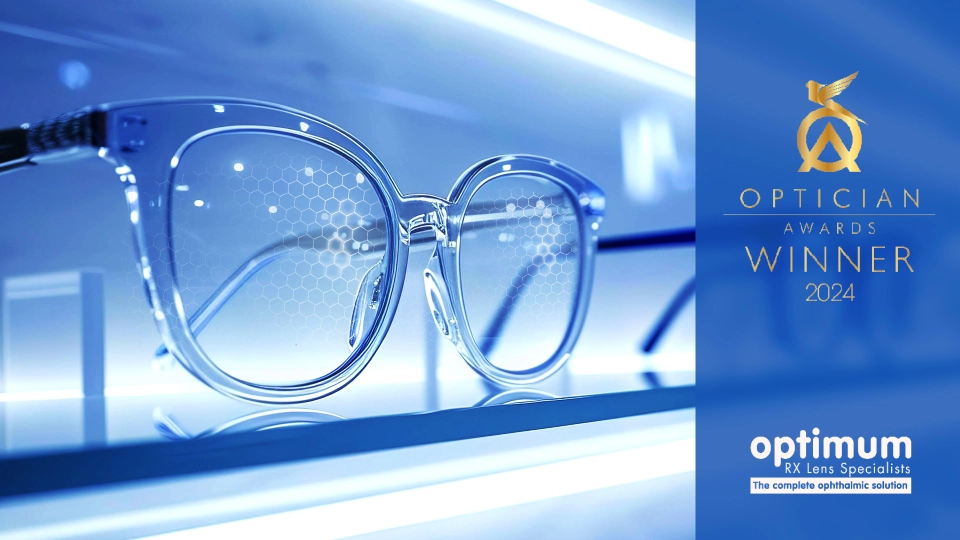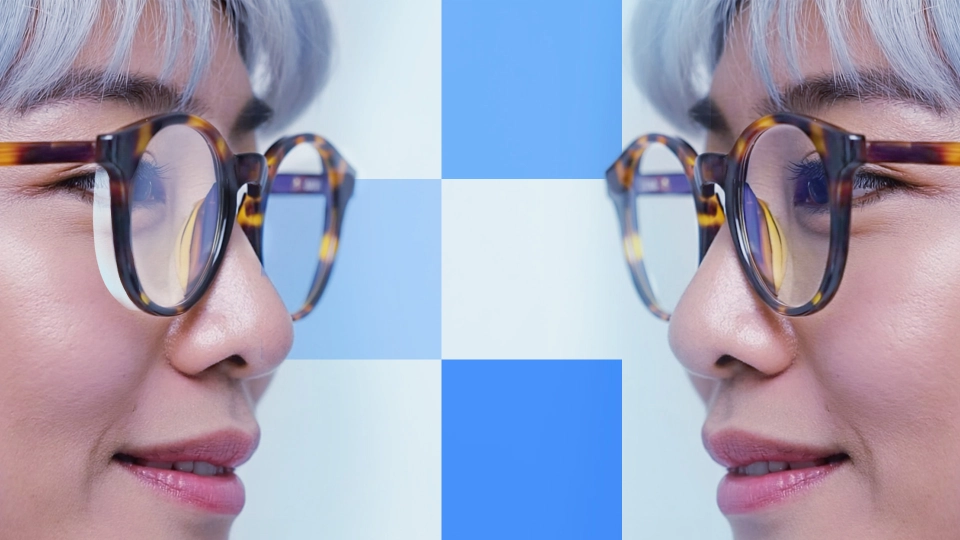
Understanding Abbe Value and Why It Matters in Lens Design
- What is Abbe value?
- How Abbe value influences perceived vision quality
- Interaction with other aberrations
- Abbe value subjective tolerance factors
- What is a “good” Abbe value?
- General thresholds
- How to choose the right material based on Abbe value
- Common optical materials and their Abbe values
- Decision-making framework for Abbe value and materials
- Design strategies to help low Abbe material
- 1. Keep the eyes near the lens center
- 2. Use lens designs that flatten the edges
- 3. Place progressive corridors where people really look
- 4. Add premium anti‑reflective (AR) coating
- 5. Set clear expectations
- Balancing Abbe value and lens design

Understanding Abbe Value and Why It Matters in Lens Design
When looking at a lens spec sheet, lab technicians often gravitate first to metrics like refractive index, base curve, and thickness. Yet one figure quietly shapes how wearers judge the “crispness” of their new eyewear: the Abbe value. Though AI-driven optimization and ultrathin high-index materials are the current buzzwords of the ophthalmic industry, Abbe value still predicts whether a patient sees a razor-sharp image or a distracting rainbow fringe.

What is Abbe value?
Abbe value (V) measures how much dispersion a material produces when light passes through it. A high Abbe value means low dispersion and clearer vision, while a low Abbe value means high dispersion and more color blur. Low dispersion helps maintain sharp, accurate vision by reducing chromatic aberration (color fringing).
Because light consists of multiple wavelengths, scientists define the Abbe value as the reciprocal of the dispersion measured between the blue (486 nm), yellow (589 nm), and red (656 nm) Fraunhofer lines. The mathematical formula for this is:
V = (nd – 1) / (nF – nC)
Where nd is the refractive index at 589 nm, nF at 486 nm, and nC at 656 nm.
A high Abbe value with low dispersion bends all wavelengths almost equally. This uniformity keeps peripheral vision sharp by treating every color the same. When dispersion grows, each wavelength bends at a slightly different angle, letting unwanted chromatic effects creep into the image and dull overall clarity.
A low Abbe number intensifies chromatic dispersion whenever the eye looks away from the optical center in a lens, so color blur grows in proportion to the prismatic effect and inversely to the Abbe value.
A lower value means higher dispersion (or more chromatic aberration) when the eye looks through the periphery of the lens, so color blur grows in proportion to the prismatic effect and inversely to the Abbe value:
Lateral color (ΔD) ≈ Prism (ΔP) / Abbe (V)
In other words, the Abbe value is inversely proportional to chromatic aberration. Materials with high Abbe values (typically above 50) exhibit low dispersion characteristics, while those with low Abbe values (below 40) show high dispersion properties. Because precise color alignment underpins sharp, comfortable vision, Abbe value remains a cornerstone of lens design, particularly when color accuracy and image clarity are paramount concerns.
How Abbe value influences perceived vision quality
Chromatic aberration—the inability of a lens to focus all colors to the same point—is directly related to the Abbe value of the lens material. This optical occurrence manifests as colored fringes or halos around objects in an image, reducing overall sharpness and color accuracy.
- Low Abbe value materials (high dispersion) cause significant separation of colors, resulting in more pronounced chromatic aberration.
- High Abbe value materials (low dispersion) maintain better color convergence, minimizing chromatic aberration.
Interaction with other aberrations
Power error: Blur from inaccurate surface curvature compounds with chromatic blur.
Astigmatic error: In high‑wrap sport frames, oblique astigmatism already lowers modulation transfer function (MTF), reducing perceived image quality; extra dispersion can tip the wearer from “acceptable” to “rejected.”
Reflections: High‑index, low‑Abbe materials have higher surface reflectance. Without a premium anti-reflective coating, patients may blame “glare” when chromatic smear is at fault.
Abbe value subjective tolerance factors
Not every patient notices chromatic aberration equally. Key predictors of sensitivity are:
- Pupil size: Larger pupils (young adults, mesopic driving) sample more peripheral rays, which results in more blur
- Task contrast: High‑contrast edges reveal fringing sooner
- Monocular vs binocular: Binocular summation hides mild error
- Adaption history: Long-term poly wearers often ignore some blur
What is a “good” Abbe value?
Abbe value changes depending on the optical material. An Abbe value over 50 is generally considered very good, but this number changes depending on the material in question. Below is a simplified overview of abbe numbers and corresponding quality, though this scale isn’t always applicable:
General thresholds
- ≥45: Largely invisible chromatic error for powers ≤ ±6.00 D and everyday gaze angles
- 38–45: Usually acceptable if power ≤ ±3.00 D, frame pupillary distance (PD) matches wearer's PD, and design is well optimized
- <38: Expect complaints in plus powers above +2.00 D, large eye sizes, or demanding visual tasks
These categories slide if the lens includes a prescribed prism, the patient spends hours at wide gaze angles (truck drivers, musicians), or the frame pushes the optical centers far from the pupil.
How to choose the right material based on Abbe value
Choosing an optical material requires balancing the Abbe value with other measurements and application requirements. For example, some organizations, like OSHA, require low-polycarbonate materials for safety glasses because of the material’s impact resistance. The Abbe value for this material is 30 V, but the function for the glasses is more important than chromatic clarity.
Common optical materials and their Abbe values
|
Material |
Avg Abbe (V) |
nᴅ |
Details |
|
CR‑39 |
58 |
1.498 |
Thick, shatters, limited impact resistance |
|
Trivex® |
45 |
1.53 |
Fewer designs, slightly thicker than 1.6 |
|
Polycarbonate |
30 |
1.586 |
Noticeable dispersion, poor tinting |
|
1.60 high‑index |
42 |
1.60 |
Harder to drill, more reflections |
|
1.67 high‑index |
32 |
1.67 |
Fragile edges, high reflectance |
|
1.74 ultra‑high |
36 |
1.74 |
Highest cost, limited designs, AR mandatory |
Material selection involves balancing the Abbe value against other properties. Optical designers try to balance the Abbe value with competing considerations:
- Refractive index: Higher refractive index materials generally have lower Abbe values, creating a design tension between thin lenses and chromatic performance.
- Mechanical properties: Durability, scratch resistance, and thermal stability may outweigh optical concerns in harsh environments.
- Manufacturing considerations: Some high Abbe value materials may be difficult to process or prohibitively expensive for volume production.
- Environmental factors: Temperature ranges, humidity, and UV exposure can affect material choices, sometimes forcing compromise on optical parameters.
Decision-making framework for Abbe value and materials
Finding the optimal compromise point among materials, use case, and environment factors is critical to developing cost-effective yet performant solutions. Consider the following:
Step 1: Sort the prescription and frame style
|
Category |
Prescription strength* |
Frame size |
Risk of color fringing |
|
Low power |
Up to ±2.00 D |
Small (<52 mm) |
Low |
|
Medium power |
±2.25 D – ±6.00 D |
Medium (52–58 mm) |
Moderate |
|
High power |
Above ±6.00 D or wrap‑around frames |
Large (>58 mm) |
High |
Step 2: Determine the wearer’s top priority, such as impact protection, ultra-thin edges, or balance.
Step 3: Check the Abbe threshold and compare against other specs. For example, if the lens creates more than four prism diopters at the wearer’s typical side‑glance angle (about 30°), and the Abbe value is below 38, expect some colored blur unless you make adjustments.
Step 4: Add coatings, like premium anti‑reflective coatings, to cut reflections and make the color fringe less obvious.
Step 5: Document and communicate the material choice, its Abbe value, and any special notes on the job ticket. When the lab, dispenser, and patient know what to expect, you prevent surprise remakes and keep satisfaction high.
Design strategies to help low Abbe material

1. Keep the eyes near the lens center
Measure pupillary distance carefully and steer patients toward smaller, well‑fitting frames. The closer their gaze stays to the central part of the lens, the less color fringing they’ll notice.
2. Use lens designs that flatten the edges
Modern free‑form designs can “flatten out” problem areas, trimming some of the off‑axis blur that makes color fringes stand out. Ask a lab for a design tuned to the frame’s shape and wrap angle.
3. Place progressive corridors where people really look
Make sure the distance viewing zone in a progressive sits right where the wearer looks straight ahead. Misplaced corridors push the eye into areas where color streaks show up faster.
4. Add premium anti‑reflective (AR) coating
Low‑Abbe, high‑index plastics reflect more light. A top‑tier AR stack cuts those reflections, making any remaining color fringe much less noticeable.
5. Set clear expectations
A quick explanation to wearers goes a long way to set expectations and improve patient satisfaction. Even mentioning that extra-thin lenses might show faint color at the edges in bright light, for example, can help prevent costly remakes.
Balancing Abbe value and lens design
The optimal strategy is not always to chase the highest Abbe value, but to thoughtfully balance material, characteristics, design features, and wearer needs. A nuanced understanding of chromatic dispersion enables smarter design decisions that enhance perceived and actual clarity. IOT equips labs and ophthalmic businesses with the tools to navigate these trade-offs, optimizing lens performance across real world conditions.
By integrating advanced free-form technologies like Digital Ray-Path 2 and a robust decision-making framework, IOT helps labs create lenses that are visually precise, thin, and comfortable - without relying on guesswork. The result is high-performance eyewear that meets high expectations, reducing re-dos and elevating satisfaction for wearers and labs alike.
Contact us to learn how IOT’s design expertise and material insight can support your lab or practice.






